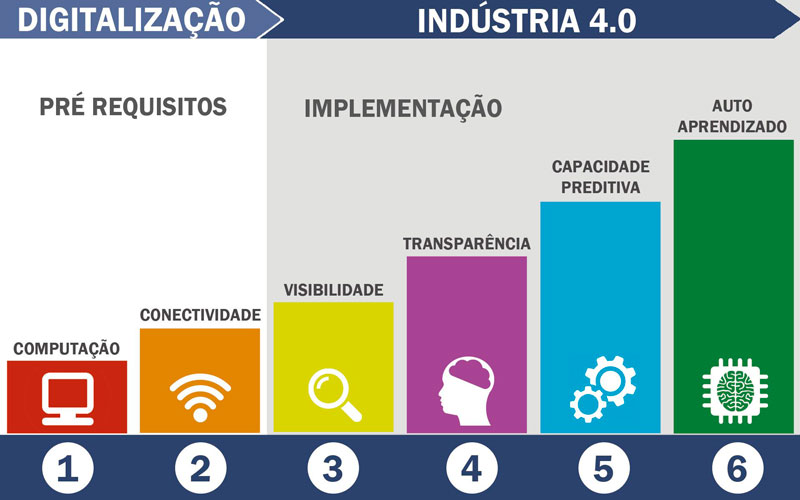A company that does not have productive efficiency operates slowly and with high costs that place the profit margin at worrying levels. To promote quality solutions in the textile industry, it is necessary to focus on waste-free production and processes that do not ignore the power of technology.
Understand what actions need to be implemented to achieve this and how they directly influence your profit margin.
What is productive efficiency?
Production efficiency is a concept that refers to increasing your production capacity, while using fewer resources. Therefore, it is about your industry being able to rationalize financial and raw material resources to optimize the production line, so that it achieves maximum productivity (according to demand) at the lowest possible cost.
There are companies that produce a lot, but with high costs or low product quality. Being efficiently productive is one of the main strategies for avoiding financial losses and wasted inputs.
Being efficiently productive is one of the main strategies for avoiding financial losses and wasted inputs.
Implementing strategies aimed at productive efficiency is directly related to increasing your profit margin, considering that this concept impacts not only on reducing losses, but on your customer’s experience and the added value of your products.
What actions are necessary to achieve productive efficiency?
During your management process that seeks production efficiency, you cannot ignore that your workforce is human and that, therefore, there are limitations. In this sense, it is necessary to adopt efficient and modern machinery, technologies that optimize production and industry 4.0 concepts.

That said, there are some adjustments and actions that you should take care of to achieve productive efficiency in your business. Understand what they are to put into practice.
Invest in technology
There is no longer room in the market for companies that operate predominantly through manual and archaic processes. This leads to productive delays and failed management. Mainly, in the textile sector, which is so volatile and immediate, the concept of industry 4.0 cannot be ignored in order to survive in the market.
Technology can, and should, be implemented in different departments and activities. To begin with, we highlight machines that optimize your production, such as in finishing, dyeing, printing, weaving and during manufacturing. It is unfeasible, if not impossible, to achieve production efficiency without having this type of solution.
Other automation models are through software, such as ERP, which operates in integrated information management, and CRM, which manages your entire relationship with customers.
Have a qualified team that helps with productive efficiency
There will be no point in having the best resources in terms of machinery and technology if your employees are not qualified, well-trained and engaged. And we’re not just talking about the production team, but everyone involved in the company.
In this sense, the best and most economical thing to do is to apply training whenever a solution is implemented, offer refresher courses and, above all, create a healthy environment for professional development, as this is a common aspect of successful companies. who work with engaged and proactive professionals who propose improvement measures.
+Have you read these?
- 5 benefits of adopting data collection in quality management
- Production management: what are the stages of your process like?
Act with an integrated vision
Maintaining a systemic, or integrated, approach and functioning of the company is about treating processes as one and not in isolation. The sales sector must work directly linked and in harmony with its production, while the customer relationship sector influences finance, marketing campaigns and production.
In other words, production efficiency needs to consider all data and information to operate with lower costs and maximum production capacity. If any sector is isolated or disconnected, production will certainly be out of alignment.
Identify bottlenecks
To apply the best solutions that promote the efficiency of textile production, it is necessary to identify which activities, products or sectors are experiencing production deficiencies and many bottlenecks.
This identification must be done through process mapping or SWOT analysis, which reveals weaknesses, strengths, opportunities and internal and external threats.
+Have you read these?
- Efficiency in Clothing Manufacturing: Discover How Machine Layout Can Help
- 4 problems that hinder the growth of the textile industry
- 7 challenges of managing a clothing factory
How do these adjustments and actions influence the profit margin?
Generally and directly, as you implement processes that optimize your production and consume minimum costs, your company gains productive efficiency and reduces operational costs. As a result, waste and losses are transformed into value, that is, profit.
In other words, your profit margin is influenced by the costs required in production and production capacity. When this first indicator is reduced, and the second increased, your gains are enhanced both in terms of sales and lower expenses involved.
Production efficiency allows your business to grow in a linear and healthy way, that is, as a whole.
This development through adaptation to new operating models is one of the requirements to remain active in the market and to make the most of the sector’s opportunities.
Now, take the opportunity to check out some problems that affect production efficiency and raw material instability in the textile industry.




